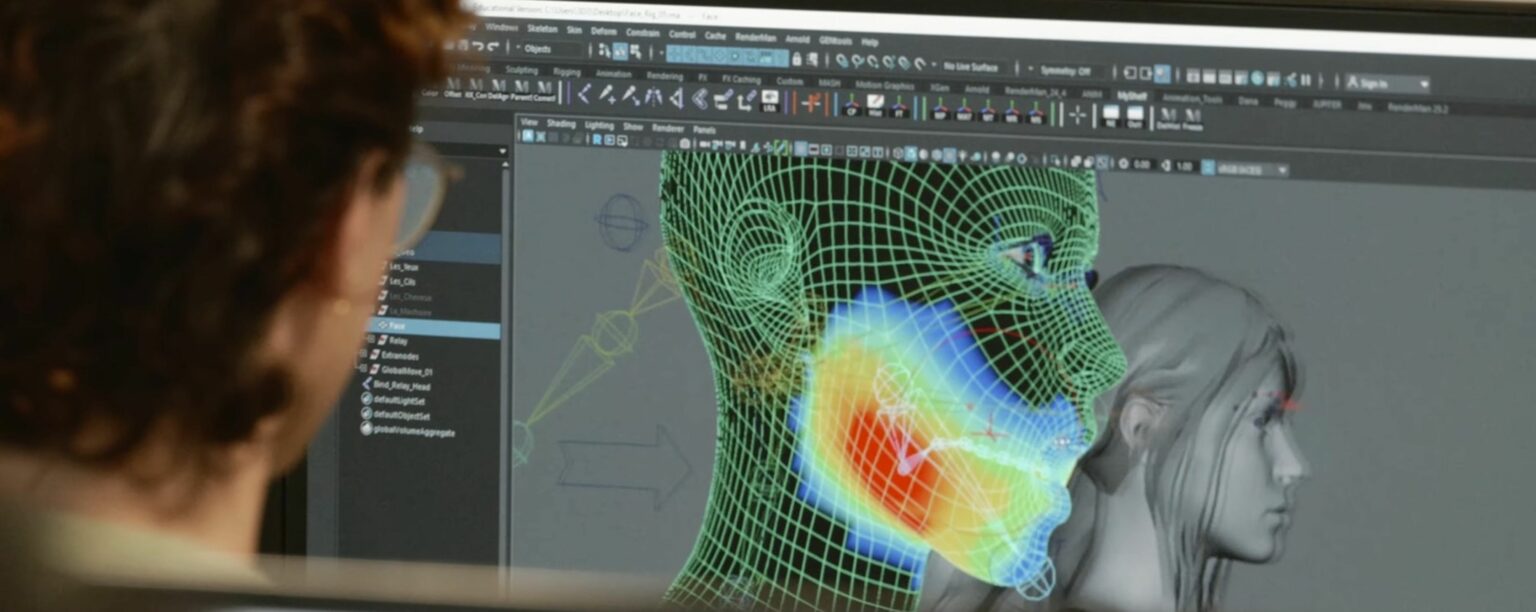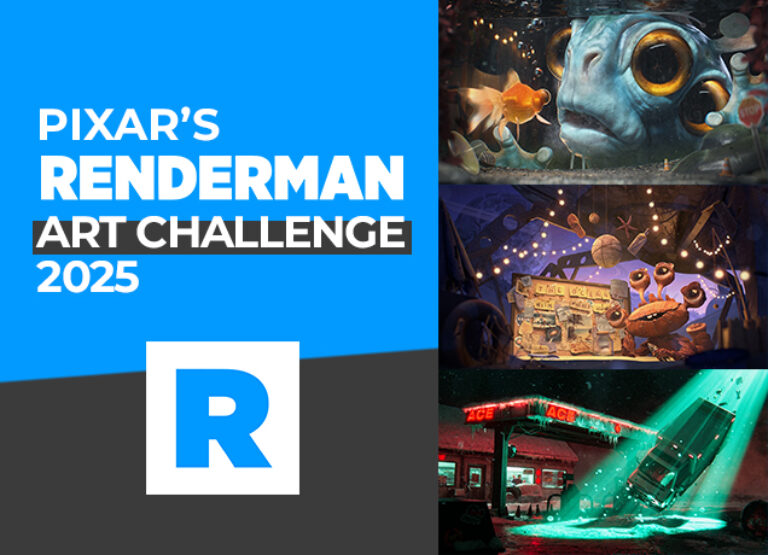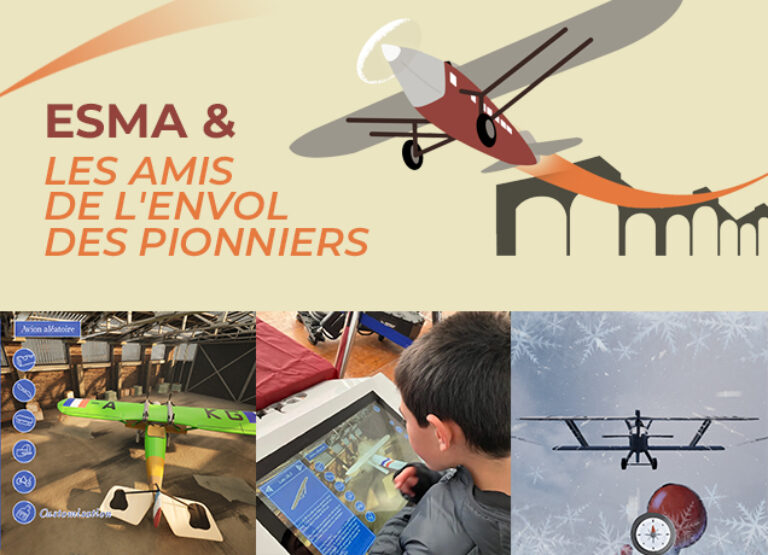
- Published 02.17.2025
- type Thematic news items
- Training 3D Animation & FX
Summarize with:
In the digital world, 3D modelers play a key role in the creation of virtual environments and objects that bring video games, films and even architectural projects to life. This profession requires specialised technical know-how, as well as an artistic sensibility that allows reality or imagination to be impressively transposed. Here is an introduction to the nature of the work of 3D modelers, the various projects they undertake, and the essential software that accompanies them throughout their different missions.
3D modeler: a multi-faceted profession
The 3D modeler is a digital artist who designs three-dimensional characters, objects and environments, often called ‘assets’. His work often starts from sketches or concept drawings, which he transforms into 3D models using specialized software. Ensuring that every detail is optimized for perfect integration into the final project, these modeling professionals hone their skills through a whole range of different exercises: from concept to realization, the 3D modeler is an expert at every stage of asset creation.
Different constraints for a 3D modeler
The 3D modeler can be compared to a modern sculptor, working with sophisticated digital tools. The models they create can represent characters, fantastic creatures, vehicles, buildings, or even entire worlds. The level of detail in a model varies depending on the project: a big-budget film will require extremely precise models, while a video game will often have to balance detail and performance to ensure smoothness.
The modeling process often begins with the receipt of a description, a sketch or an artistic concept. From there, the 3D modeler begins to sculpt the model, first in a basic form, before adding increasingly complex details. This includes textures, materials, and finishes that mimic real-world light and shadows. The modeler is never alone: they often have to work with other members of the team, such as animators, 3D art directors and lighting engineers, to ensure that the model fits perfectly into the world of the project and ,that it can be animated.
Video Games and 3D animated films: Are the lines blurring?
A key aspect of this job is optimization. 3D models often have to be adapted to work smoothly in a video game engine or on a cinema screen. This means that modelers have to balance geometric complexity with performance. For example, a character model for a video game must have a limited number of polygons for the game to run smoothly, while a model for an animated film can be much more detailed.However, this need for compromise is expected to disappear with new technologies such as Unreal Engine 5, which is increasingly pushing the boundaries of the world of video games.
Also, 3D modelers often specialize in specific areas. Some prefer to create realistic or stylised characters, while others focus on architecture, natural environments, or inanimate objects. The specialities of each modeler depend on their interests and the needs of the industry in which they work. Generally, a modeler must be able to grasp a variety of styles. An art school such as ESMA offers its students the opportunity to tackle them in practical work, whether it be interior design, stylisation, cell-shading, hand-painting, etc.
Examples of projects produced by modelers (films, video games, architecture)
3D modelers work on a wide variety of projects, and each sector has its own requirements and challenges. Here are a few examples to illustrate the scope of their work.
The creations of a 3D modeler: Visual effects in Cinema and television
In the film industry, 3D modeling is a fundamental stage in the creation of films with visual effects (VFX). Blockbusters such as Avatar, Avengers and Jurassic World, for example, rely heavily on 3D models to create alien creatures, fictional environments, or objects that do not exist in reality. 3D modelers create elements that are as complex as they are varied, with such meticulous attention to detail that mastering the modeling software perfectly becomes essential.
Focus on 3D modeling in animation: From arcane to Pixar
In animated films, such as those produced by Pixar or DreamWorks for example, modelers work closely with animators and scriptwriters to create expressive, colorful characters. Each model must not only be visually captivating, but also designed to allow smooth animation. This means that considerations such as joint flexibility, muscle deformation and surface structure must be taken into account from the design phase onwards.
For example, here is a trailer for a 3D animated short film showcasing the work of 3D modelers, in collaboration with 3D animators from ESMA.
Video games, specific requirements for the 3D modeler
The video game industry is a perfect playground for 3D modelers. The worlds created in games such as Ratchet & Clank, Red Dead Redemption and Cyberpunk 2077 are perfect examples of the complexity and ambition of modelers. Every detail, whether it is a main character or a simple piece of furniture, contributes to the player’s immersion in an interactive universe.
3D modelers of video games often have to take into account the constraints imposed by game engines. This means optimising the models to ensure they integrate perfectly into the game, so that the game runs without slowing down while maintaining exceptional visual quality. The modeler must also be aware of how the models will interact with the physics and gameplay systems, which adds a level of technical complexity to the task.
The 3D modeler in Architecture, interior design: enhancing future projects
In the architecture sector, 3D modelers create visual representations of buildings even before construction begins. These models are often used for presentations to clients or to test the feasibility of architectural concepts. For example, an architect can collaborate with a 3D modeler to show a property developer what an apartment complex will look like, including details such as construction materials, natural lighting and furnishings.
Interior design is also an area where 3D modeling is invaluable. Designers use 3D models to create realistic renderings of spaces, allowing clients to visualise colours, textures and interior design before committing to costly renovations. Modeling also makes it possible to test different options and ensure that design decisions are made with confidence.
Advertising and marketing, fields hungry for 3D models
Companies are increasingly using 3D modeling for their advertising campaigns. This includes creating product models for TV commercials or social media posts. For example, a car company can use 3D models to show a car from different angles, in environments that are impossible to recreate in real life. This saves time and money while offering creative flexibility that is impossible to achieve otherwise.
Medical, training: an unknown but very real market for the 3D modeler
Finally, a field that people do not immediately think of, but where 3D is nevertheless one of the most useful, is the medical field. 3D modelers create models of human body parts for surgery simulations and training. These models can be used to help surgeons prepare for complex surgeries or to train medical students in a more interactive and visual way. This shows the importance of precision and realism in 3D modeling.
The essential software for the 3D modeler profession (Blender, Maya, 3ds Max)
To excel as a 3D modeler, it is essential to master the tools that bring your ideas to life. Here is an overview of the most widely used software in the industry.
Blender, the king of free 3D tools
Blender is open-source 3D modeling software that has gained popularity thanks to its lightweight interface, which is easier to understand than other 3D software, and of course, the fact that it is free. It is used in many studios for a variety of tasks, including modeling, animation, rendering, and even video editing. Blender is appreciated for its active online community and the abundant resources available online, which makes it accessible to beginners as well as experienced professionals. Although free, Blender is very powerful and is used in productions of professional quality.
It can also be a gateway, for example, for high school students wishing to experiment with 3D before considering a career in a specialised school.
The software offers tools for advanced modeling, such as digital sculpting, mesh modifiers and procedural shading, which enable the creation of highly complex models. In addition, its integrated rendering engine, Cycles, produces images of cinematic quality, making it a versatile choice for 3D artists, whether for film or video games.
Autodesk Maya: the essential
Maya is one of the most widely used pieces of software in the professional industry, particularly for the creation of films and video games. It is known for its advanced modeling capabilities and its powerful animation tools. Maya offers unrivalled flexibility, allowing users to customise workflows and create highly detailed and optimized models for different platforms.
Film studios and video game developers use Maya for ambitious projects where detail and realism are essential. The rigging, texturing and particle simulation tools are among the most sophisticated on the market, making it the industry standard for 3D modelers. However, Maya has a steeper learning curve, and its high licence cost means that it is mainly used by professionals.
Autodesk 3ds Max: the darling of design and architecture
3ds Max is another flagship tool in the world of 3D modeling, often preferred by architects and designers. It is renowned for its polygonal modeling tools and powerful rendering capabilities. 3ds Max is widely used for architectural visualization, as it allows for the creation of photorealistic renderings of environments and efficient structures.
The features of 3ds Max, such as advanced texturing, the mesh modifier and physical simulations, make it an excellent choice for projects requiring a high level of realism. Artists working in the field of construction and design find this tool particularly intuitive for creating detailed models of buildings and landscapes. Like Maya, it is a paid software programme, making it a tool used by studios and not just amateur artists.
Conclusion:
3D modeling is an exciting and constantly evolving discipline at the heart of digital innovation in many sectors. Whether it’s building fantasy worlds in films, designing entire cities in architecture, or creating realistic objects for advertisements, 3D modelers transform concepts into impressive visual realities. The choice of software, whether Blender, Maya or 3ds Max, depends on the specific requirements of each project, but they all share the same objective: to push the limits of what digital art can achieve, and it is necessary to train in a large number of different software programs in order to be suitable for all assignments.




